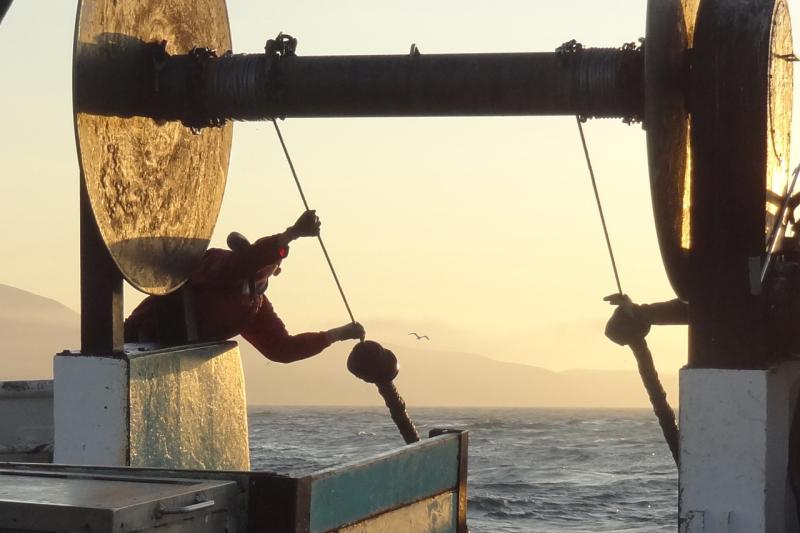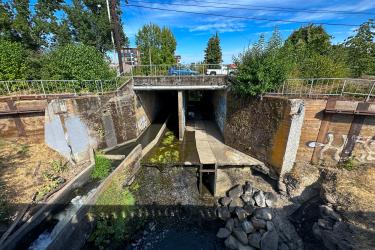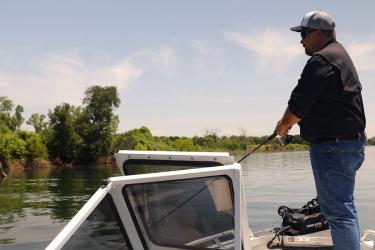The groundfish fishery closures in 2002 were sweeping. Hundreds of thousands of square miles of West Coast waters shut off to the very same bottom fishing that had many fishing ports booming in the previous decade. The Secretary of Commerce declared the 2000 groundfish fishery a failure, with losses to fishermen estimated at $11 million.
The rockfish boom was going bust.
“Behind the sweeping action is a reluctant realization that the vast ocean has limits and cannot, as was long believed, provide an inexhaustible supply of fish,” the Los Angeles Times said in announcing the closures that in effect created the largest marine reserve ever off the West Coast. The closures covered most of the continental shelf, home to nearly 100 different species of rockfish.
Scientists estimated that some of those fish could take nearly a century to rebuild.
“It was devastating,” said Jason Cope, a research fish biologist at NOAA Fisheries’ Northwest Fisheries Science Center in Seattle who worked on teams assessing the decline of groundfish. “It radically altered people’s expectations of their livelihood. Suddenly a future they thought was reliable turned out to be anything but.”
Fishing Infrastructure Vanishes
The decline of processing plants and other facilities to support fisheries came quickly. “Ice plants, fuel docks, anything to support fishing was going down the tubes,” recalls Bob Dooley, a Northern California fisherman who now serves on the Pacific Fishery Management Council.
"It was truly a tragedy of the commons,” said Andrew Bornstein, part owner of his family’s company, Bornstein Seafoods. There was every incentive for fishermen to catch as much as they could, and little incentive to conserve fish for the future. The challenge would be to reverse that equation.
The fishing industry sought a new future, asking for a vessel buyback program so some could leave fishing altogether.
The fishing industry was split, said John Holloway, a longtime Oregon fishermen who is now chair of the Pacific Fishery Management Council’s Groundfish Advisory Subpanel. “The angry ones quit the fishery,” he said. “They left. If you wanted to stay, you had only one option. You had to stay in the system to survive.”
Sacrifice from All Sides
The Council develops fishery management plans for the West Coast and advises NOAA Fisheries on management decisions. It became the forum for determining the way forward. “The Council process became the chemistry set, the place where everyone tried to find a future,” Cope said. “It took every single person to sacrifice something to make it happen.”
In contrast to many environmental dilemmas, in the case of the rockfish fishery, he said, “people came together instead of falling apart.”
From the Pacific Fishery Management Council (PFMC) process came a new model for fishing. It brought new accountability to the fishery and created an incentive to protect resources for the future. Called Catch Shares, it was patterned after similar programs in Alaska, British Columbia, and on the East Coast. It divided the available catch among the remaining vessels in the fishery.
Each fisherman is fully accountable for adhering to a quota for each species, and everyone’s catch counts toward overall fishery limits. Fishermen who hit their quota must stop fishing or buy or trade more quota from others. They have an incentive to avoid species with low quotas. Independent observers on every boat record any discarded fish, and shoreside monitors verify the catch.
“Everyone had a stake in the future of the fishery,” said John Holloway, chair of the PFMC’s Groundfish Advisory Subpanel, which helps set direction for the fishery. The tradeoff was additional regulation and expense for fishermen, including the cost of the observers to monitor each vessel’s catch. The costs remain a burden for many fishermen, they say.
Gathering Data Together

When fishermen doubted the science showing the stocks in collapse, fisheries scientists invited them to take part in fisheries surveys that monitor the populations. That continues today, with regular groundfish surveys conducted on local groundfish vessels in collaboration with NOAA Fisheries.
Commercial fishermen operate the fishing gear aboard, which gives them more confidence in the results.
“They wanted to know where the information was coming from, so it made sense for them to help gather it,” Cope said.
At the same time, the environment dealt rockfish a winning hand. Although it wouldn’t become clear for a few years, ocean conditions fostered increased reproduction of key rockfish species. This led to strong recruitment of younger fish into the population.
Combined with vastly reduced harvests, a shrunken fleet, and improved stock assessments, the positive reproduction put rockfish—and the fishery—on the road to recovery. Stocks that had once been declared overfished in rapid-fire fashion began coming back, some of them decades ahead of expectations.
The next step for the fleet was to find a place to sell it.




